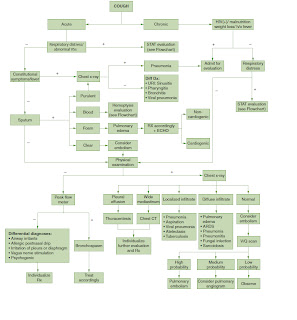For EN II
HW 3
The deadline is 28/4/2013
Please answer the following questions
Ali is 6 months old and presents to your busy clinic accompanied by his father. His father describes Ali as being unwell throughout the day with a history of intermittent vomiting. He thinks that he might have some pain as he has been crying and drawing up his legs. Ali is the first child in the family and Dad is very concerned.
1. What are your first impressions – describe your ‘hands off’ assessment at this point?
(20 Marks)
2. What potential differential diagnosis could you be thinking of at this time any why? (20 Marks)
Physical examination and history reveal the following:
History: Full term breast fed baby, immunizations up to date, no illnesses or health problems to date.
O/E: pale, slightly lethargic infant
Temp 38, HR 160, RR 35, BP: difficult to obtain, SaO2 98% CR > 2sec Weight, 6.5 kg
Urine Output: 2 wet nappies in the last 24hrs, no diarrhea
Abdomen: no masses palpable, examination appears to aggravate the baby
3. Does your examination alter your initial impression or priority assigned to Ali? Why?
(20 Marks)
4. Construct five nursing Diagnoses for Ali (15 Marks)
5. What would your course of management be for Ali? Include any interventions, investigations, consultation. (25 Marks)
HW 3
The deadline is 28/4/2013
Please answer the following questions
Ali is 6 months old and presents to your busy clinic accompanied by his father. His father describes Ali as being unwell throughout the day with a history of intermittent vomiting. He thinks that he might have some pain as he has been crying and drawing up his legs. Ali is the first child in the family and Dad is very concerned.
1. What are your first impressions – describe your ‘hands off’ assessment at this point?
(20 Marks)
2. What potential differential diagnosis could you be thinking of at this time any why? (20 Marks)
Physical examination and history reveal the following:
History: Full term breast fed baby, immunizations up to date, no illnesses or health problems to date.
O/E: pale, slightly lethargic infant
Temp 38, HR 160, RR 35, BP: difficult to obtain, SaO2 98% CR > 2sec Weight, 6.5 kg
Urine Output: 2 wet nappies in the last 24hrs, no diarrhea
Abdomen: no masses palpable, examination appears to aggravate the baby
3. Does your examination alter your initial impression or priority assigned to Ali? Why?
(20 Marks)
4. Construct five nursing Diagnoses for Ali (15 Marks)
5. What would your course of management be for Ali? Include any interventions, investigations, consultation. (25 Marks)


